Industrial sensors are at the heart of modern manufacturing and process control systems, ensuring efficiency, reliability, and safety. Did you know that choosing the right sensor can make a huge difference to the performance of your production processes? In this guide, you will learn how to choose the right industrial sensors based on different factors and needs. By reading this article, you will gain practical knowledge and tips to help you optimize your industrial processes and increase productivity.
In this article, we will look at the main factors to consider when choosing industrial sensors and give an overview of the different types of sensors.
Table of contents:
The first step in selecting industrial sensors is to define the purpose of the application clearly. Where, what, and how will be sensed and monitored. You also need to understand the factors related to the environmental conditions in which the sensors will operate.
Each type of industrial position sensor offers unique features and benefits to meet specific application requirements. No matter what your application, whether it's detecting the presence of objects, monitoring positioning accuracy, or sorting objects by color or contrast.
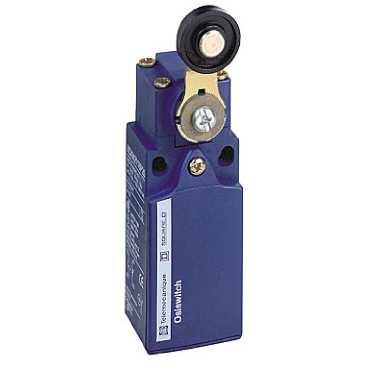 Mechanical limit switches are simple but mechanically robust physical contact switches that provide discrete on/off signals when a moving object reaches a predefined position or limit. They will be a reliable solution for end-of-motion detection or condition monitoring in industrial machinery and equipment. One of the most important parts of mechanical switches is the actuator, or switch head, which is in physical contact with the object to be detected; its selection must take into account the characteristics of the object to be detected and its movement.
Mechanical limit switches are simple but mechanically robust physical contact switches that provide discrete on/off signals when a moving object reaches a predefined position or limit. They will be a reliable solution for end-of-motion detection or condition monitoring in industrial machinery and equipment. One of the most important parts of mechanical switches is the actuator, or switch head, which is in physical contact with the object to be detected; its selection must take into account the characteristics of the object to be detected and its movement.
 Photoelectric or simply photo sensors use a beam of light to detect the presence or absence of objects. They are available in a variety of configurations and will be suitable for a very wide range of applications in industrial environments, but there are a number of aspects to consider when selecting photo sensors.
Photoelectric or simply photo sensors use a beam of light to detect the presence or absence of objects. They are available in a variety of configurations and will be suitable for a very wide range of applications in industrial environments, but there are a number of aspects to consider when selecting photo sensors.
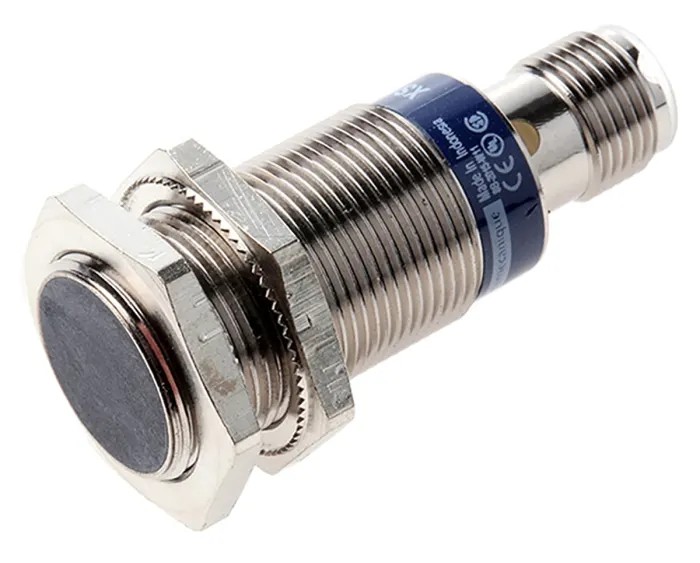 Inductive sensors use electromagnetic induction to detect the presence of metal objects without physical contact. They are commonly used to determine the position of various metal parts, for example, to detect the presence of components in production equipment or to monitor the movement of a conveyor belt.
Inductive sensors use electromagnetic induction to detect the presence of metal objects without physical contact. They are commonly used to determine the position of various metal parts, for example, to detect the presence of components in production equipment or to monitor the movement of a conveyor belt.
One of the main characteristics of the sensor to be considered in the selection is the settling distance factor, i.e. the operating distance of the sensor at different metal types, the basic range of the sensor specification is the settling distance for steel, for other metals such as aluminum, brass, copper or stainless steel the settling distance decreases. There are also special versions of inductive sensors with a reduction factor of 1, where the operating distance on all metals is the same.
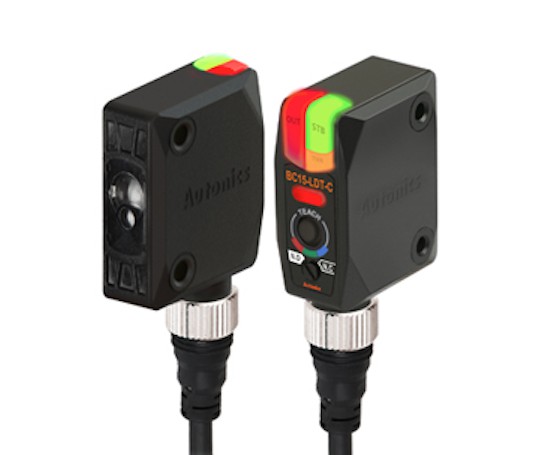 Colour and contrast sensors detect differences in colour or contrast between objects or surfaces, allowing precise identification and sorting of certain objects. They are commonly used in packaging, printing and quality control solutions. Given that the processes in these solutions are typically fast, the response time required for the sensor to detect the object and transmit an output signal must be taken into account when selecting these sensors.
Colour and contrast sensors detect differences in colour or contrast between objects or surfaces, allowing precise identification and sorting of certain objects. They are commonly used in packaging, printing and quality control solutions. Given that the processes in these solutions are typically fast, the response time required for the sensor to detect the object and transmit an output signal must be taken into account when selecting these sensors.
Distance sensors measure the distance between a sensor and a target object.
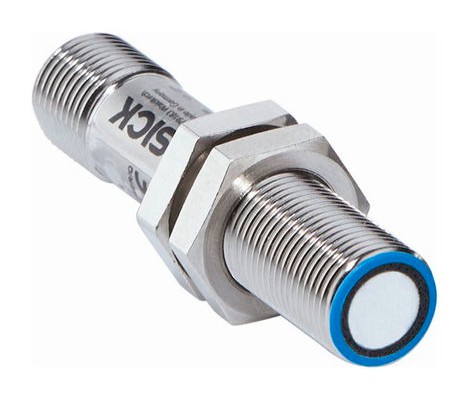 Ultrasonic sensors use sound waves to measure the distance to an object. These sensors emit a high-frequency ultrasonic pulse and measure the time it takes for the echo to return after bouncing off the object. The distance is calculated based on the speed of sound in air.
Ultrasonic sensors use sound waves to measure the distance to an object. These sensors emit a high-frequency ultrasonic pulse and measure the time it takes for the echo to return after bouncing off the object. The distance is calculated based on the speed of sound in air.
When choosing an ultrasonic sensor, consider
The range depends on the power of the sensor, the size of the sensor and the angle of the receiver. Larger sensors can emit and receive stronger signals, while the angle of the sensor beam influences the scattering power. A narrow beam angle focuses sound waves in a particular direction, which can increase range. On the other hand, wider beam angles scatter sound waves over a larger area, which can reduce the range but increase the coverage area.
The accuracy of measurements is generally not affected by environmental conditions such as dirt, dust or fog, but the temperature or humidity of the environment may affect the speed of sound and therefore the accuracy of the measurement.
Surface characteristics of the object - smooth and hard surfaces reflect ultrasound waves better, ensuring high accuracy. On the other hand, soft or absorbent surfaces, such as fabric or foam, may absorb ultrasound waves, reducing the effective range and accuracy.
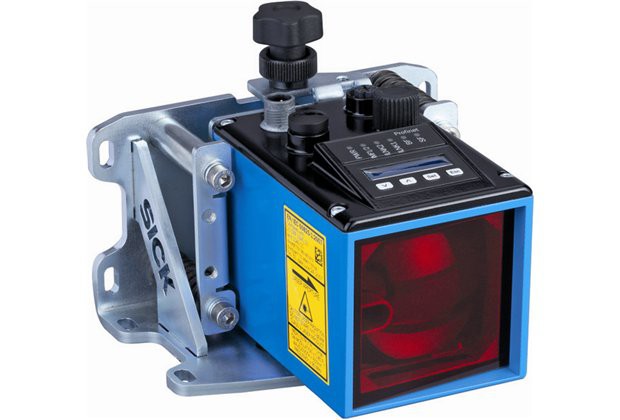 Laser distance sensors use a beam of laser light to measure distance. They emit a pulse of laser light and measure the time it takes for the pulse to bounce off the object and return to the receiver. These sensors are known for their high accuracy and long range capabilities.
Laser distance sensors use a beam of laser light to measure distance. They emit a pulse of laser light and measure the time it takes for the pulse to bounce off the object and return to the receiver. These sensors are known for their high accuracy and long range capabilities.
Benefits of choosing laser distance sensors:
One of the most important limiting factors is the ambient conditions such as dust, fog or rain, which can scatter the laser light beam and affect the accuracy of the measurement.
| Sensor type | Advantages | Operating conditions |
| Mechanical limit switches | Reliable, mechanically robust | End-of-motion detection |
| Photoelectric sensors | Versatile configurations | Detection of various objects in industrial environments |
| Inductive sensors | Detection without physical contact | Detection of metallic objects |
| Color and contrast sensors | Fast operation, precise object sorting | Packaging, printing, quality control |
| Ultrasonic sensors | Use of sound waves, precision | Dirt, dust, fog, but sensitive to temperature and humidity |
| Laser distance sensors | High accuracy, wide range | High accuracy but sensitive to environmental conditions |
Each sensor type offers unique features and benefits to suit your individual application requirements. Whether it's object detection, positioning, or distance sensing, industrial sensors play a vital role in improving automation, efficiency, and productivity in industrial environments.

